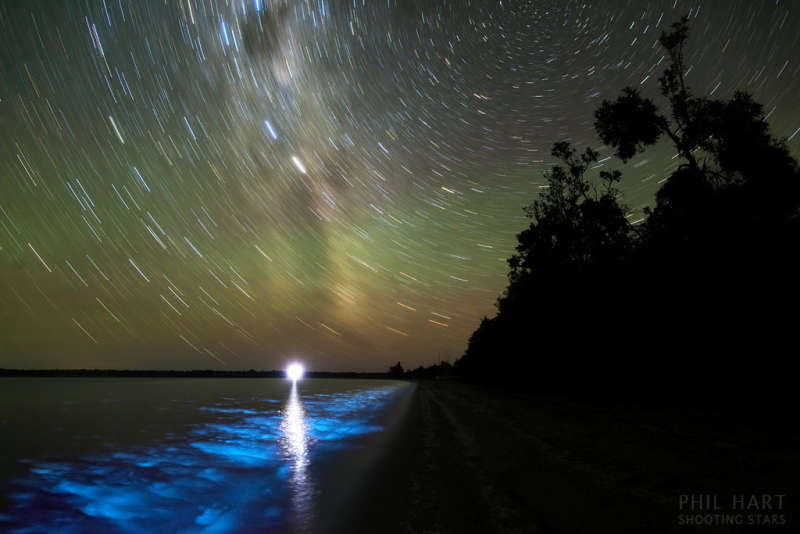Credit & Copyright: Phil Hart
Explanation:
What shines in
the world
at night?
Just visible to the eye, a rare electric blue glow spread
along the shores of Victoria Lake on January 16, 2013.
Against reflections of a light near the horizon,
this digitally stacked long exposure
recorded the bioluminescence
of noctiluca scintillans,
plankton stimulated by the lapping waves.
Above, the night skies of the Gippsland Lakes
region, Victoria, Australia shine with a fainter
greenish airglow.
Oxygen atoms in the upper atmosphere, initially
excited by ultraviolet sunlight, produce the more widely seen fading
atmospheric
chemiluminescence.
Washed out by the Earth's rotation, the faint band
of the southern summer Milky Way stretches from the horizon
as star trails circle the South Celestial Pole.
Watch:
Meteors vs. Supermoon
1999 2000 2001 2002 2003 2004 2005 2006 2007 2008 2009 2010 2011 2012 2013 2014 2015 2016 2017 2018 2019 2020 2021 2022 2023 2024 2025 |
Январь Февраль Март Апрель Май Июнь Июль Август Сентябрь Октябрь Ноябрь Декабрь |
NASA Web Site Statements, Warnings, and Disclaimers
NASA Official: Jay Norris. Specific rights apply.
A service of: LHEA at NASA / GSFC
& Michigan Tech. U.
|
Публикации с ключевыми словами:
night sky - ночное небо
Публикации со словами: night sky - ночное небо | |
См. также:
Все публикации на ту же тему >> | |
